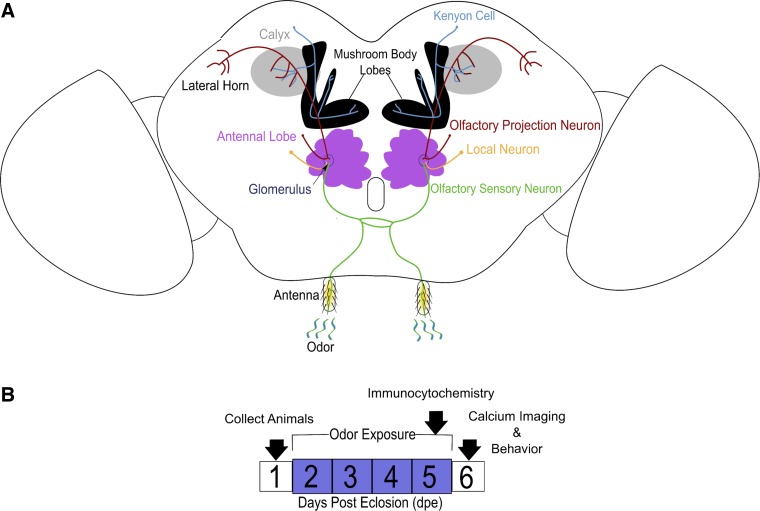Fig. 1.
Diagram of the Drosophila olfactory circuitry and the odor exposure paradigm used to drive critical period plasticity in the antennal lobe. A: the olfactory system. Odors are transduced by the dendrites of olfactory sensory neurons on the antenna. The axons of these sensory neurons project bilaterally into the same antennal lobe glomerulus of each brain hemisphere. Within a glomerulus, olfactory sensory neurons synapse onto local interneurons and olfactory projection neurons. The axons of these projections neurons synapse in two major central brain neuropils: the mushroom body calyx and the lateral horn. B: the odor exposure procedure used in experiments throughout this article (unless noted otherwise). Newly eclosed Drosophila are collected over the course of 1 day. Next, juvenile animals are transferred into vials with a specific odor for 4 days. At the end of the 5th day, flies are processed for immunocytochemistry. To avoid short-term plasticity due to odor exposure, animals are kept in odor-free conditions for 1 day before behavioral or functional analyses are carried out.

